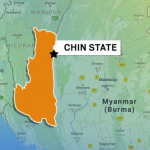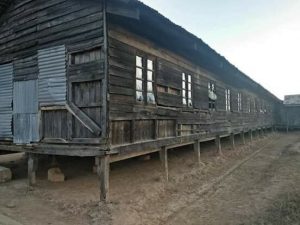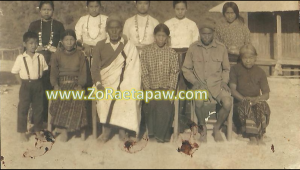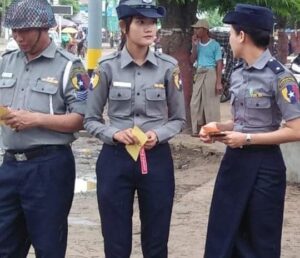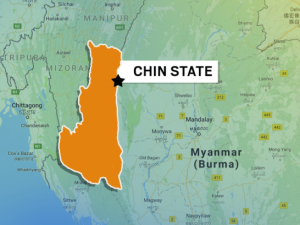Early history
The Chin people are a Mongolian Tribe. They entered the Chin Hills in the first millennium AD as part of the wider migration of Chin peoples into the area. For much of history, the sparsely populated Chin Hills were ruled by local chiefs.
Some historians (Arthur Phayre, Tun Nyein) put Pateikkaya in eastern Bengal, thus placing the entire Chin Hills under Pagan suzerainty but others, like Harvey, citing stone inscriptions, put it near the eastern Chin Hills.[4] (Burmese Chronicles report the kings of Pateikkaya as Indian though the ethnicity of the subjects is not explicitly cited.)
Feudal era
The first confirmed political entity in the region was the Shan State of Kale (Kalay), founded by the Shan people who came to dominate Kale kabaw valley of the northwestern-to-eastern arc of Burma after the fall of the Pagan Kingdom in 1287. Kale was a minor Shan state. Its author. The minor state occasionally paid tribute to the larger Shan States of Mohnyin and Mogaung and ultimately became a vassal state of the Burmese Ava Kingdom in the 1370s. Starting in the 1480s, Ava began to disintegrate and Kale was swallowed up by the Shan State of Mohnyin by the 1520s.
The Burmese kingdoms between 1555 and 1559 when King Bayinnaung of the Toungoo Dynasty conquered part of Upper Burma and its surrounding regions, stretching from the eastern and northern Shan states to the western Maguay division and plaine region inManipur.[5] Toungoo began to weaken in the late 17th century. By the 1730s a resurgent Manipuri Kingdom had conquered the Kabaw Valley from the Burmese. The Chin Hills is Autonomous.
Colonial era
The British acquired the Chin Hills a decade after the Third Anglo-Burmese War of 1885. The ensuing Chin resistance to the British was suppressed only by 1896 with the arrest of Khai Kam Suantak of Siyin area. The administered the Chin Hills as part of Arakan Division.[6] American missionaries began arriving in the 1890s and, by the middle of 20th century, most of the Chin people had converted to Christianity.
The region was the westernmost advance of the Imperial Japanese Army, which occupied the region in November 1943, in World War II. After the war, Chin state leaders headed by Vumkhohau Suantak, with Burman, Shan and Kachin leaders, participated in the Panglong Conference which discussed the future of an independent Union of Burma. Because of the region’s heavy economic dependence on Burma, Chin leaders, unlike Shan and Kachin leaders, asked only for a “special administrative division”, not a full-fledged state. As a result, when the 1947 Constitution of Burma granted the right of secession to states after 10 years after the independence, the Chin people did not get a state (no right to secede). (The Karen, who did not participate in the conference, received a state, with the right to secede.)
Post independence
Upon independence from the United Kingdom in 1948, Chin Hills Special Division was created out of Arakan Division, with the capital at Falam. On January 4, 1974, it was granted state status and became Chin State.[6] Today, the state has little infrastructure and remains extremely poor and undeveloped.
“Chin National Day” is designated on 20 February to commemorate the “General Assembly of Chinland” held in 1948.[7] The first celebration of Chin National Day was held in 1951. But it was not well recognized by Myanmar governments until the 2010s.
Copy Link : https://en.wikipedia.org/wiki/Chin_State





